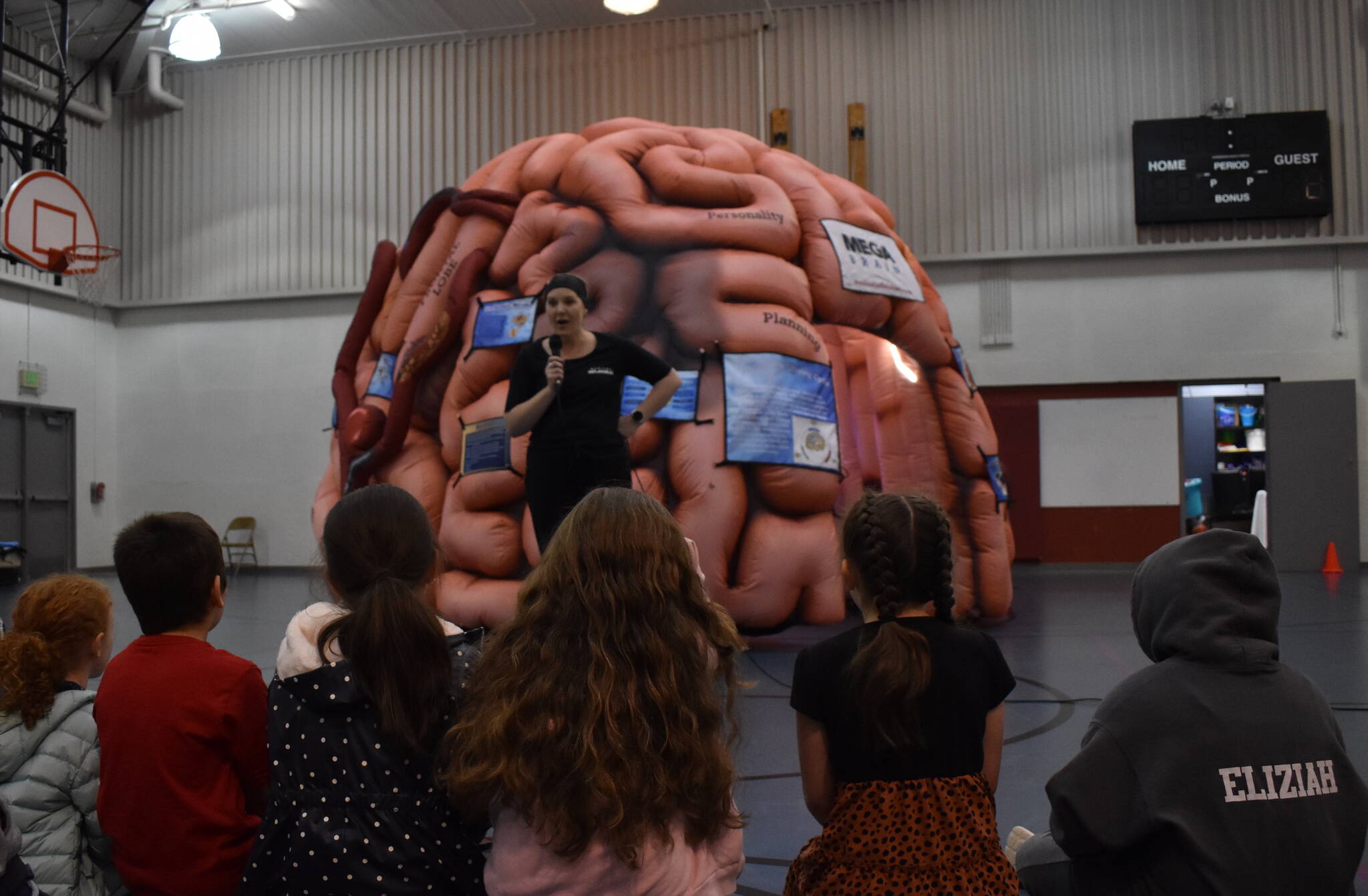Second grader Ella Foulds thought she knew a lot about the brain. That was until Wednesday morning, when she walked through one.
It wasn’t a spongy mass of nerves and blood vessels she explored, but instead, a 14-foot-tall inflatable replica of the precious organ tucked inside her own cranium.
“Everything was amazing,” Foulds said afterward. “You had to look left, right, up, down.”
The “mega brain” — featuring blinking light displays, educational signage and life-like aesthetics — was set up in the Central Elementary School gym in Hoquiam for most of Wednesday as classes visited for a short 3D lesson on cortexes, neurons and the harmful effects of substance use on brain function.
On Thursday, the brain traveled to Ocosta Junior/Senior High School, and then to Miller Junior High School in Aberdeen. It’s an initiative led by Harbor Strong and My Town — Grays Harbor County public health coalitions that serve Aberdeen and Hoquiam, respectively, working to prevent and raise awareness about substance use.
Key partners for those coalitions are local school districts, said Haley Falley, Harbor Strong coordinator and community health specialist with public health. In January, Falley and other health officials attended a substance prevention conference in Washington, D.C. That’s where they discovered the brain.
“It was the center of attention — this giant, inflatable brain,” Falley said.
A Texas-based company called Medical Inflatable Exhibits, Inc. makes the brain available for rent and sends a medical professional to give the presentation and walkthrough. On Wednesday that was Jenalie Raphelt, a Houston-area paramedic and event director for Medical Inflatables.
Falley said it’s the type of project aligned with the goals of the coalitions, which are funded with grants through the Washington State Healthcare Authority’s community prevention and wellness initiative.
“What’s exciting about the brain is it’s so unique, it’s really interactive and it’s more than just a presentation or a walkthrough,” Falley said. “It’s going to provide a long-lasting effect.”
For the youngest students at Central Elementary, the focus was less about substance use and more about basic brain facts — the functions of the four lobes, and that the organ continues to develop until age 25.
With the brain’s pink folds looming behind them on Wednesday, students became “neurons,” playing a game of telephone — passing a whispered message down a single-file line — to demonstrate how the brain controls body parts, and how those body parts send sensory information back to the brain.
Central Elementary Principal Laurie Gordon said neural education has been a focus for the school in recent years. That includes teaching staff how brain chemistry leads to certain student behaviors and learning patterns, and conducting brain-related lessons for students.
The event was also a “brain break” for kids during the first day of testing, Gordon said.
But even for young students, Gordon said substance use awareness and prevention is important.
“The earlier we can educate and prevent substance abuse, the better off we are,” Gordon said. “I don’t think we can stick our heads in the sand.”
As the brain continues its Grays Harbor tour, Falley said the brain will be used to show how specific substances — cannabis, vaping, alcohol and opioids — alter brain chemistry.
“Youth are a huge voice in our community, and prevention has been so important,” Falley said. “Substances affect our schools quite a bit. It’s been a huge focus, and we want youth to find that voice, we want youth to speak up.”
Contact reporter Clayton Franke at 406-552-3917 or clayton.franke@thedailyworld.com.



